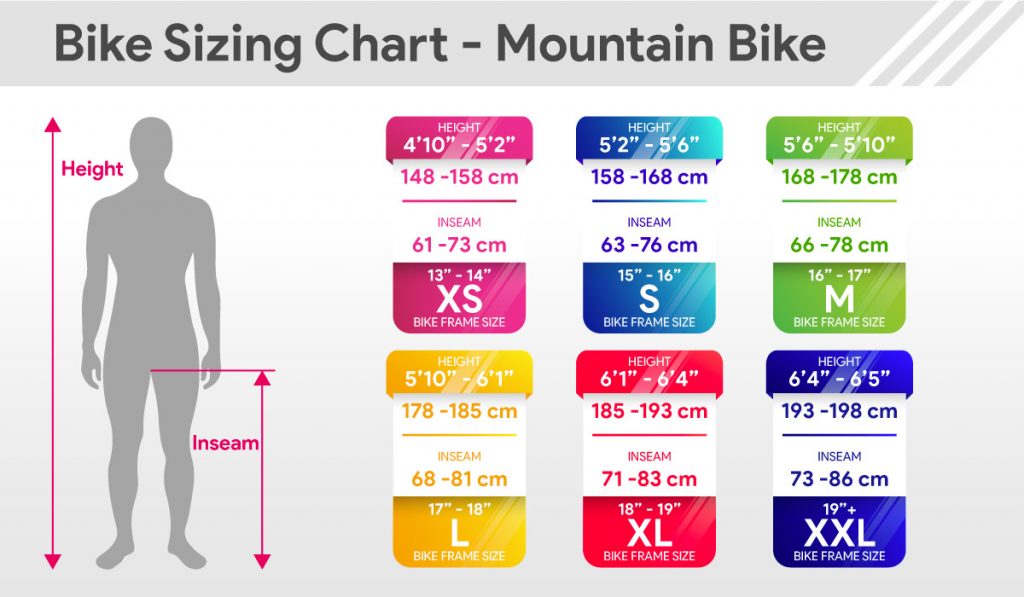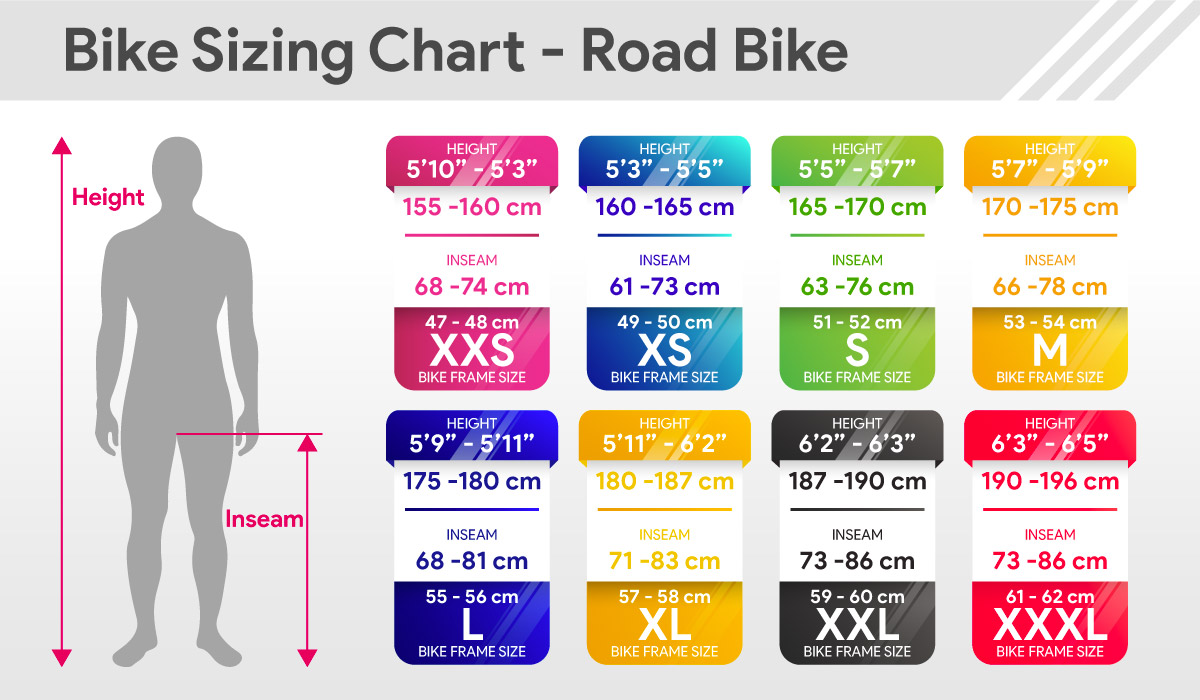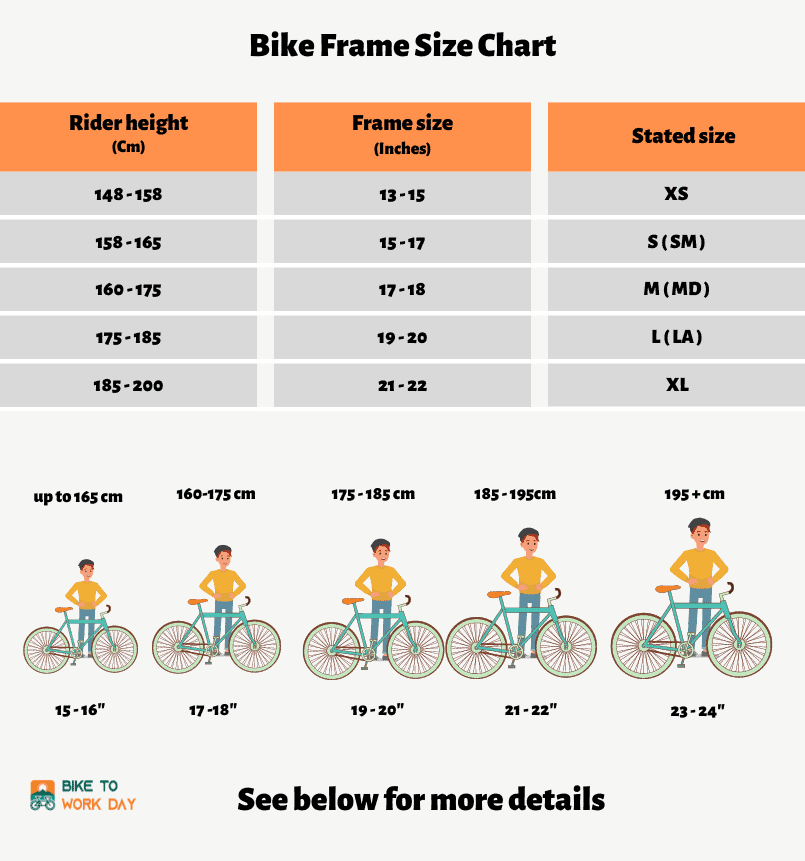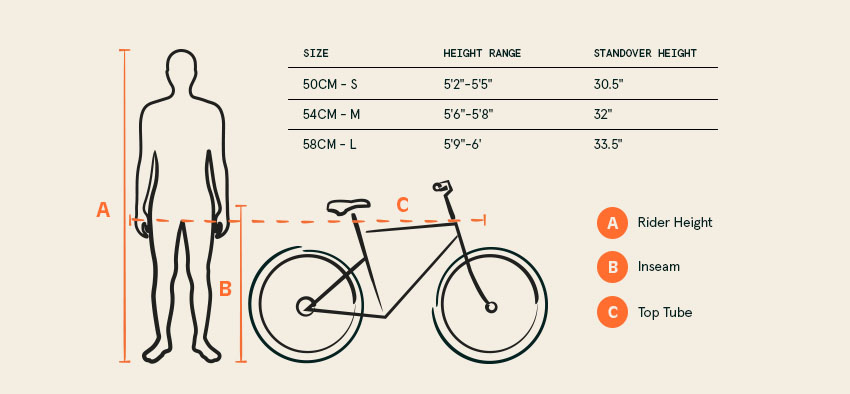Why Proper Bike Frame Size Matters
A properly sized bike frame is essential for a comfortable and efficient cycling experience. Measuring bicycle frame size accurately can make all the difference in reducing the risk of injury, improving performance, and enhancing overall enjoyment. A well-fitting frame allows riders to maintain a comfortable position, generate more power, and conserve energy. Conversely, a poorly fitting frame can lead to discomfort, fatigue, and decreased performance.
When a bike frame is too small or too large, it can cause a range of issues, including back and neck strain, numbness in the hands and feet, and decreased control over the bike. Furthermore, a frame that is not proportionate to the rider’s body can affect the bike’s handling and stability, making it more difficult to maneuver. By measuring bicycle frame size accurately, riders can ensure a comfortable and efficient fit, reducing the risk of injury and improving their overall cycling experience.
In addition to the physical benefits, a properly sized bike frame can also have a significant impact on a rider’s mental state. When a bike fits well, riders feel more confident and comfortable, allowing them to focus on their performance and enjoy the ride. On the other hand, a poorly fitting frame can lead to frustration and disappointment, making it more challenging to stay motivated and engaged.
Measuring bicycle frame size is a crucial step in finding the perfect fit. By taking the time to accurately measure and assess their needs, riders can ensure a comfortable and efficient cycling experience. Whether you’re a seasoned pro or a beginner, a well-fitting frame is essential for getting the most out of your bike and enjoying the many benefits of cycling.
How to Measure Your Bike Frame Size
Measuring bicycle frame size accurately is crucial to ensure a comfortable and efficient fit. There are several methods to measure bike frame size, including using a tape measure, a sizing chart, or seeking the expertise of a bike shop professional. Each method has its advantages and limitations, and it’s essential to understand the differences to make an informed decision.
Using a tape measure is a straightforward method to measure bike frame size. Measure the length of the seat tube, from the center of the bottom bracket to the top of the seat tube. This measurement will give you the frame size in inches or centimeters. However, this method may not be entirely accurate, as it doesn’t take into account the frame’s geometry and design.
A sizing chart is another popular method to determine bike frame size. Most manufacturers provide sizing charts specific to their models, which can be found on their websites or in bike shops. These charts typically provide a range of frame sizes based on rider height and inseam. However, sizing charts can be limited, as they may not account for individual variations in body proportions.
Seeking the expertise of a bike shop professional is often the most accurate method to measure bike frame size. Bike shop professionals have extensive knowledge of different frame sizes, geometries, and designs. They can assess your riding style, body proportions, and preferences to recommend the ideal frame size. Additionally, they can perform a bike fit analysis to ensure the frame size is compatible with your body.
Regardless of the method chosen, it’s essential to ensure accurate measurements. Take multiple measurements to confirm the frame size, and consider factors such as standover height, reach, and stack height. By taking the time to accurately measure and assess your needs, you can ensure a comfortable and efficient fit, reducing the risk of injury and improving your overall cycling experience.
When measuring bicycle frame size, it’s also important to consider the type of bike and its intended use. Different types of bikes, such as road, mountain, or hybrid, have unique frame geometries and designs. Understanding these differences can help you make an informed decision when selecting a frame size.
Understanding Bike Frame Size Charts
Bike frame size charts are a valuable tool for determining the ideal frame size. However, it’s essential to understand the different types of charts and their limitations. Manufacturer-specific size charts are designed for specific bike models and take into account the unique geometry and design of the frame. These charts are often the most accurate, but may not be available for all bike models.
General sizing charts, on the other hand, provide a more universal approach to frame sizing. These charts typically categorize riders into different height and inseam ranges, corresponding to specific frame sizes. However, these charts may not account for individual variations in body proportions and riding style.
When using a bike frame size chart, it’s crucial to consider the following factors: rider height, inseam, and arm length. These measurements will help determine the ideal frame size and ensure a comfortable fit. Additionally, consider the type of bike and its intended use, as different types of bikes have unique frame geometries and designs.
One of the limitations of relying solely on size charts is that they may not account for individual variations in body proportions. For example, a rider with a longer torso may require a larger frame size, even if their height and inseam fall within a specific range. Similarly, a rider with shorter arms may require a smaller frame size to maintain a comfortable riding position.
Another potential pitfall of relying solely on size charts is that they may not account for the nuances of frame design. Different manufacturers may have unique frame geometries and designs, which can affect the fit and comfort of the bike. For example, a bike with a more upright riding position may require a smaller frame size, while a bike with a more aggressive riding position may require a larger frame size.
By understanding the limitations and potential pitfalls of bike frame size charts, riders can make more informed decisions when selecting a frame size. It’s essential to consider multiple factors, including rider height, inseam, arm length, and riding style, to ensure a comfortable and efficient fit. Measuring bicycle frame size accurately is crucial, and using a combination of methods, including size charts and expert advice, can help riders find the perfect fit.
The Role of Rider Height and Inseam in Frame Sizing
Rider height and inseam are two crucial factors to consider when determining the ideal bike frame size. These measurements play a significant role in ensuring a comfortable and efficient fit, as they affect the rider’s position on the bike and the overall riding experience.
Rider height is a fundamental factor in frame sizing, as it determines the ideal frame size range. Generally, riders with a shorter height require a smaller frame size, while taller riders require a larger frame size. However, this is not a hard and fast rule, as individual variations in body proportions can affect the ideal frame size.
Inseam is another essential factor to consider, as it affects the rider’s position on the bike and the overall comfort. A rider with a longer inseam may require a larger frame size to accommodate their leg length, while a rider with a shorter inseam may require a smaller frame size. By considering both rider height and inseam, riders can narrow down their frame size options and find the ideal fit.
When measuring rider height and inseam, it’s essential to use accurate and reliable methods. Riders can use a tape measure or a sizing chart to determine their height and inseam. Additionally, consulting with a bike shop professional can provide valuable insights and guidance on finding the ideal frame size.
By understanding the relationship between rider height, inseam, and bike frame size, riders can make informed decisions when selecting a frame size. Measuring bicycle frame size accurately is crucial, and considering these factors can help riders find the perfect fit. Whether you’re a seasoned pro or a beginner, finding the ideal frame size is essential for a comfortable and efficient riding experience.
When using rider height and inseam to determine frame size, it’s also essential to consider the type of bike and its intended use. Different types of bikes, such as road, mountain, or hybrid, have unique frame geometries and designs. By considering these factors, riders can find the ideal frame size that meets their specific needs and preferences.
Considering Your Riding Style and Preferences
When it comes to selecting a bike frame size, riding style and personal preferences play a significant role. Different riding styles, such as road, mountain, or commuting, require unique frame geometries and designs. Understanding these differences can help riders choose the ideal frame size that meets their specific needs and preferences.
Road riders, for example, typically prefer a more aggressive riding position, which requires a smaller frame size. This allows for a more aerodynamic position, improved handling, and increased efficiency. On the other hand, mountain riders often prefer a more upright riding position, which requires a larger frame size. This provides more stability, control, and comfort on technical terrain.
Commuting riders, who often ride in a more relaxed position, may prefer a frame size that falls somewhere in between. This allows for a comfortable riding position, easy handling, and sufficient stability. By considering their riding style, riders can narrow down their frame size options and find the ideal fit.
In addition to riding style, personal preferences also play a significant role in frame size selection. Some riders may prefer a more upright riding position, while others may prefer a more aggressive position. Some may prioritize comfort, while others may prioritize efficiency. By understanding these preferences, riders can choose a frame size that meets their individual needs and preferences.
When considering riding style and personal preferences, it’s essential to think about the type of bike and its intended use. Different types of bikes, such as road, mountain, or hybrid, have unique frame geometries and designs. By considering these factors, riders can find the ideal frame size that meets their specific needs and preferences.
Measuring bicycle frame size accurately is crucial, and considering riding style and personal preferences can help riders find the perfect fit. By taking the time to understand their individual needs and preferences, riders can choose a frame size that provides a comfortable, efficient, and enjoyable riding experience.
Popular Bike Frame Sizes: What to Expect
When it comes to bike frame sizes, there are several common sizes that are widely available. These sizes can vary depending on the type of bike, manufacturer, and model. Understanding the typical ranges for different types of bikes can help riders narrow down their frame size options and find the ideal fit.
For road bikes, the typical frame size range is between 48cm and 62cm. This range is designed to accommodate riders with a height range of 5’2″ to 6’4″. Mountain bikes, on the other hand, typically have a frame size range of 13″ to 21″. This range is designed to accommodate riders with a height range of 5’0″ to 6’6″. Hybrid bikes, which combine elements of road and mountain bikes, typically have a frame size range of 15″ to 23″.
It’s essential to note that these are general guidelines, and frame size can vary significantly between manufacturers and models. For example, a Trek road bike may have a different frame size range than a Specialized road bike. Additionally, some manufacturers may offer custom frame sizes or bespoke frames that can be tailored to an individual rider’s needs.
When selecting a bike frame size, it’s crucial to consider the type of bike and its intended use. Different types of bikes have unique frame geometries and designs that can affect the fit and comfort of the bike. By understanding the typical frame size ranges for different types of bikes, riders can make informed decisions and find the ideal frame size that meets their specific needs and preferences.
Measuring bicycle frame size accurately is crucial, and understanding the typical frame size ranges can help riders find the perfect fit. By taking the time to research and understand the different frame size options, riders can ensure a comfortable, efficient, and enjoyable riding experience.
In addition to understanding the typical frame size ranges, it’s also essential to consider the variations in frame size between manufacturers and models. By consulting manufacturer-specific size charts and seeking expert advice when needed, riders can ensure that they find the ideal frame size that meets their specific needs and preferences.
Real-World Examples: Frame Sizes for Popular Bike Models
To illustrate the variations in frame size between brands and models, let’s consider a few examples of popular bike models. Trek, Specialized, and Giant are three well-known brands that offer a range of bike models with different frame sizes.
Trek’s road bike models, such as the Domane and the Madone, have frame sizes that range from 48cm to 62cm. Specialized’s road bike models, such as the Tarmac and the Roubaix, have frame sizes that range from 49cm to 61cm. Giant’s road bike models, such as the TCR and the Defy, have frame sizes that range from 47cm to 60cm.
Mountain bike models from these brands also have varying frame sizes. Trek’s mountain bike models, such as the Fuel and the Session, have frame sizes that range from 13″ to 21″. Specialized’s mountain bike models, such as the Stumpjumper and the Enduro, have frame sizes that range from 13″ to 20″. Giant’s mountain bike models, such as the TCX and the Anthem, have frame sizes that range from 13″ to 19″.”
These examples illustrate the importance of consulting manufacturer-specific size charts and seeking expert advice when needed. Measuring bicycle frame size accurately is crucial, and understanding the variations in frame size between brands and models can help riders find the perfect fit.
By considering the specific frame size options for each brand and model, riders can make informed decisions and find the ideal frame size that meets their specific needs and preferences. Additionally, consulting with a bike shop professional can provide valuable insights and guidance on finding the perfect fit.
Ultimately, finding the right frame size is a critical step in ensuring a comfortable and efficient riding experience. By taking the time to research and understand the different frame size options, riders can ensure that they find the perfect fit and enjoy a safe and enjoyable ride.
Final Check: Ensuring a Comfortable and Efficient Fit
After considering the various factors that influence bike frame size, it’s essential to take a final step to ensure a comfortable and efficient fit. Test riding a bike is the best way to verify that the chosen frame size is the best fit for the rider.
When test riding a bike, pay attention to the following factors: comfort, efficiency, and control. A well-fitting bike should feel comfortable and efficient, with the rider able to maintain a relaxed position and generate power with ease. The bike should also respond well to the rider’s inputs, with a sense of control and stability.
If the bike feels uncomfortable or inefficient, it may be necessary to adjust the frame size or make other adjustments to the bike. Measuring bicycle frame size accurately is crucial, and test riding a bike is the final step in ensuring a comfortable and efficient fit.
In addition to test riding a bike, it’s also essential to consider the following tips for verifying that the chosen frame size is the best fit:
Check the standover height: Make sure the rider can stand over the bike with both feet flat on the ground and have a clearance of about 1-2 inches between the crotch and the top tube.
Check the reach: Ensure the rider can comfortably reach the handlebars and maintain a relaxed position.
Check the saddle height: Make sure the saddle is at the correct height, with the rider’s leg almost fully extended when the pedal is in its lowest position.
By following these tips and test riding a bike, riders can ensure a comfortable and efficient fit, and enjoy a safe and enjoyable ride.







